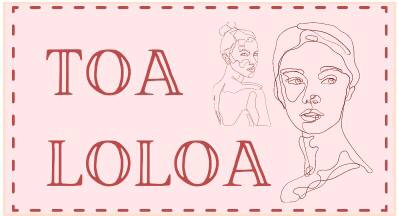In the world of software, crack and patch methods have become common terms among users seeking to bypass the official activation processes for their programs. This guide delves into the nuances of how individuals attempt to gain full access to Windows software using piracy techniques. From keygen tools to unauthorized license keys, we’ll explore the various methods and their implications.
While the allure of free software is undeniable, it’s crucial to understand the legal and ethical ramifications of such practices. This article will also shed light on the potential risks associated with using crack tools and unauthorized patches, emphasizing why legitimate software acquisition is always the recommended approach.
Join us as we navigate through the intricate world of software activation and the consequences of engaging in piracy. Armed with knowledge, you can make informed decisions about your software needs while staying on the right side of the law.
Ultimate Guide to Windows Crack: Achieve Full Access and Activation
For users seeking to gain full access and activation of their Windows operating system without purchasing a legitimate license, the term “crack” often comes into play. This guide explores various methods, including software tools and keygens, that are typically used in the realm of software piracy. It’s important to note that using these methods involves significant risks and legal implications.
Understanding Windows Crack and Its Risks
A Windows crack is a tool or software designed to bypass the activation process and provide unauthorized access to the operating system. Commonly, these tools come in the form of patches or keygens, which generate fake license keys. Using such cracks not only violates Microsoft’s terms of service but also exposes users to potential security threats and instability. For instance, some cracks might contain malware or viruses that can compromise your computer’s security.
Alternative to Cracks: Using an Activator
Instead of resorting to risky cracks, you might consider using an activator to achieve activation. Activators are designed to provide a more reliable and secure way to manage software activation. However, even with activators, users should be cautious and ensure that they understand the legal implications of using such tools. Always weigh the risks and benefits before proceeding with any form of software activation.
Understanding Windows Crack Methods and Techniques
When discussing the methods and techniques used to crack Windows software, it is essential to understand the various approaches and tools involved. Below is a comprehensive overview of the common techniques used in the world of software piracy:
- Activation Cracks: These methods involve bypassing or altering the activation process of Windows to avoid the need for a valid product key. Activation cracks typically modify system files or registry entries to make the operating system believe it is properly activated.
- Keygens: Short for “key generators,” keygens are tools designed to generate valid product keys for Windows software. They create serial numbers that can be used to activate the operating system without purchasing a legitimate license.
- Crack Patches: Crack patches are modifications to the software’s executable files or system components. These patches alter the code of Windows to disable copy protection features or to remove licensing checks, enabling the software to run without proper activation.
- Loader Programs: Loaders are specialized tools that inject code into the Windows operating system to circumvent activation checks. They often work by manipulating the memory or altering the execution flow of the Windows process to evade detection of unauthorized use.
- Custom Activation Keys: Some methods involve creating custom activation keys that are not officially recognized by Microsoft. These keys are used in conjunction with cracks to activate Windows without a valid license.
It’s important to note that while these techniques can provide temporary access to Windows software, they are illegal and violate Microsoft’s terms of service. Engaging in software piracy not only exposes users to legal risks but also compromises the security and stability of the operating system. Using legitimate methods to obtain and activate Windows ensures compliance with legal standards and provides access to official support and updates.
Essential Tools for Windows Crack Success
When navigating the world of Windows crack methods, having the right tools at your disposal can make all the difference. Here are some of the essential tools that are commonly used to achieve full access and activation of Windows operating systems:
Keygen and Activation Tools
One of the most critical tools in the cracking process is the keygen (key generator). These tools are designed to produce valid license keys for Windows, enabling you to bypass the standard activation procedures. Keygens often work by generating a unique set of license keys that can activate Windows without the need for an official purchase.
In addition to keygens, activation tools are also widely used. These programs can modify system files to alter the way Windows checks for activation. They work by either inserting a valid license key or changing the system’s response to activation requests.
Patch and Crack Software
Patches are another essential tool in the cracking toolkit. They are small files that modify or replace existing files within the Windows operating system to disable activation checks or adjust how the system processes license validation. Applying a patch can effectively remove the need for activation or registration.
Crack software encompasses a range of programs designed to bypass or disable Windows activation mechanisms. Cracks often work in conjunction with keygens and patches to fully activate Windows. They might alter system files or inject new code to circumvent standard activation checks.
It’s important to note that using these tools involves piracy and can lead to legal consequences. Always consider the ethical and legal implications before attempting to use such software.
Step-by-Step Instructions for Windows Activation
Activating Windows without a valid license is considered piracy and is illegal. This guide aims to provide an understanding of the legitimate process for activating Windows, ensuring you stay compliant with software laws.
Follow these steps to activate Windows using a genuine license key:
| Step | Description |
|---|---|
| 1 | Open the Settings app by pressing Win + I on your keyboard. |
| 2 | Select Update & Security from the menu. |
| 3 | Click on Activation</ in the left sidebar. |
| 4 | Click on Change product key if you are entering a new license key. |
| 5 | Enter your 25-character product key and click Next to proceed. |
| 6 | Follow the on-screen instructions to complete the activation process. |
| 7 | Restart your computer if prompted to finalize the activation. |
Remember, using cracks or unauthorized patches to bypass activation processes is illegal and could lead to serious consequences. Always use legitimate methods and licensed software to ensure compliance and security.
Common Issues and Troubleshooting Tips for Windows Crack
When attempting to use a Windows crack, users often encounter several common issues. Here are some troubleshooting tips to help resolve these problems:
| Issue | Possible Cause | Solution |
|---|---|---|
| Activation Errors | The crack or patch may not be compatible with the version of Windows you are using. | Verify that the crack or patch you are using is specifically designed for your Windows version. You might need to download a different version or update the crack. |
| Software Crashes | The crack may be incomplete or corrupted, causing instability. | Re-download the crack or patch from a trusted source. Ensure that you are following the installation instructions carefully. |
| Antivirus Alerts | Some antivirus programs may flag cracks or keygens as malware due to their nature. | Temporarily disable your antivirus software while applying the crack. Re-enable it once the process is complete, and ensure that the source of the crack is reliable. |
| Windows Updates | Recent Windows updates might invalidate the crack or patch. | Consider disabling automatic updates if you rely on a crack. Alternatively, wait until a new crack or patch is released that is compatible with the latest updates. |
| Invalid Keys | The keygen might be generating invalid or expired keys. | Use a different keygen or verify that the one you are using is up-to-date. You might need to find a new source for keygens that provide valid activation keys. |
Note that using cracks and keygens to bypass software activation is illegal and considered piracy. It is always recommended to purchase software legally to avoid potential legal and security issues.
Legal and Ethical Considerations of Windows Cracking
When discussing the topic of Windows cracking, it is crucial to address the legal and ethical implications associated with this practice. Cracking Windows, which involves bypassing activation processes, using illegal patches, or employing keygens to gain unauthorized access, is fraught with significant risks and consequences.
From a legal standpoint, cracking Windows is considered software piracy. Piracy refers to the unauthorized use, distribution, or alteration of software. Using cracked versions of Windows not only violates the terms of service set forth by Microsoft but also infringes on copyright laws. Engaging in piracy can result in severe legal penalties, including fines and potential imprisonment.
Ethically, the use of cracked software raises several concerns. It undermines the hard work and intellectual property of software developers who invest time and resources into creating and maintaining their products. By choosing to use cracks or keygens, individuals contribute to a cycle of theft and devaluation of genuine software, which ultimately affects innovation and development in the industry.
Below is a table summarizing the key legal and ethical issues related to Windows cracking:
| Aspect | Legal Implications | Ethical Implications |
|---|---|---|
| Activation Bypass | Violation of copyright law and software licensing agreements. | Disregard for the intellectual property rights of developers. |
| Use of Patches | Illegal distribution and use of unauthorized software modifications. | Compromises the integrity and security of software systems. |
| Keygens | Involves creation and use of illegal software keys, breaching licensing terms. | Undermines the financial sustainability of software companies. |
| Cracked Software | Possible civil and criminal penalties for software piracy. | Encourages unethical behavior and damages the software industry. |
In summary, while the allure of free software might be tempting, the legal and ethical consequences of using cracked versions of Windows are severe. It is always advisable to adhere to legitimate channels for obtaining and activating software to support developers and ensure compliance with the law.
Alternative Solutions for Windows Activation and Access
When exploring options for Windows activation and access, it’s essential to understand that while some solutions may seem tempting, they often come with significant risks and ethical concerns. One such method is the use of keygens, which are software tools designed to generate serial keys for activating Windows. These tools often claim to offer a quick fix for activation issues, but they come with notable downsides.
Risks Associated with Keygens and Cracked Software
Using keygens and cracked software poses substantial risks. These tools frequently distribute malware, including viruses and trojans, which can compromise your system’s security and lead to data loss. Furthermore, the use of such tools falls into the realm of software piracy, which is illegal and unethical. Engaging in piracy can result in severe legal consequences, including fines and penalties.
Legitimate Alternatives for Windows Activation
For those seeking to avoid the pitfalls of unauthorized methods, legitimate alternatives are available. Purchasing a genuine Windows license from an authorized retailer ensures that you receive a valid product key and access to official updates and support. Additionally, many software vendors offer discounted licenses for students and educational institutions, which can provide a cost-effective solution while staying within legal boundaries.
In summary, while alternative solutions like keygens may seem appealing, they carry significant risks and ethical issues. Opting for a legitimate Windows license not only ensures compliance with legal standards but also provides peace of mind and support for your operating system.
Cheap IWC replica UK wholesale,like IWC replica watches for the best price, top replica watches store.

